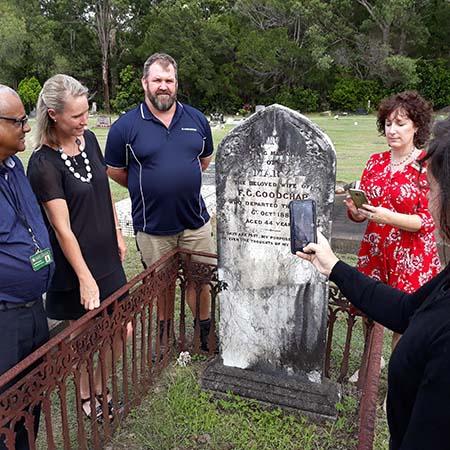Family history buffs looking to confirm whether their ancestors were laid to rest in Noosa can now search thousands of online burial records, dating back to the late 1800s.
“The online portal provides access to more than 5500 records with just a few clicks of the mouse, and from anywhere in the world,” Noosa Heritage Coordinator, Jane Harding said.

Staff from Council’s Heritage, IT and Cemeteries teams have worked together to compile the new online database that allows history buffs and family historians to search for their ancestors’ local graves, and in some cases view a picture of the headstone, from anywhere in the world.
“This will be a huge help to family historians and anyone researching Noosa’s local history.”
Search results include the grave’s location within the cemetery, with a link to a map, and in some cases, a picture of the headstone.
“Researching family history is a popular hobby worldwide and as records have increasingly become available online, researchers expect to be able to access them this way.”
“The local history community eagerly awaits Noosa Council’s launch of this service and it will be enthusiastically embraced by researchers worldwide.”
Noosa Council owns and maintains cemeteries at Pomona, Cooroy and Tewantin.
“The oldest documented local burials took place in the early 1870s, which was when European settlement began here,” Ms Harding said.
A small team of Council Environmental Health staff spent many hours checking historical records against thousands of graves.
“This project has been a massive feat for such a small team, and the speed at which they’ve done it is remarkable,” Environmental Health Coordinator, Sunil Kushor said.
Ms Harding said Council welcomed input from any researchers who may be able to help fill in any gaps that still exist in the historical records.
“The database includes about 150 years of records that have been maintained by many different entities over the years, so as with all historical data there are some missing or incomplete entries.”
Ms Harding said researching ancestry had become a popular pastime, and it had led to a new form of tourism.








